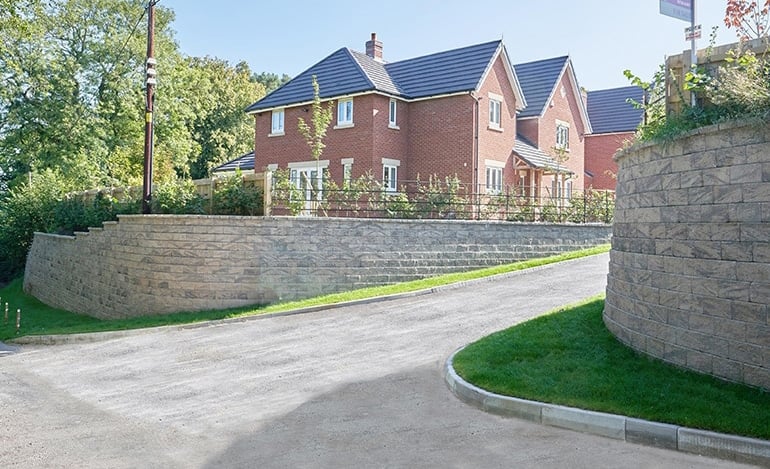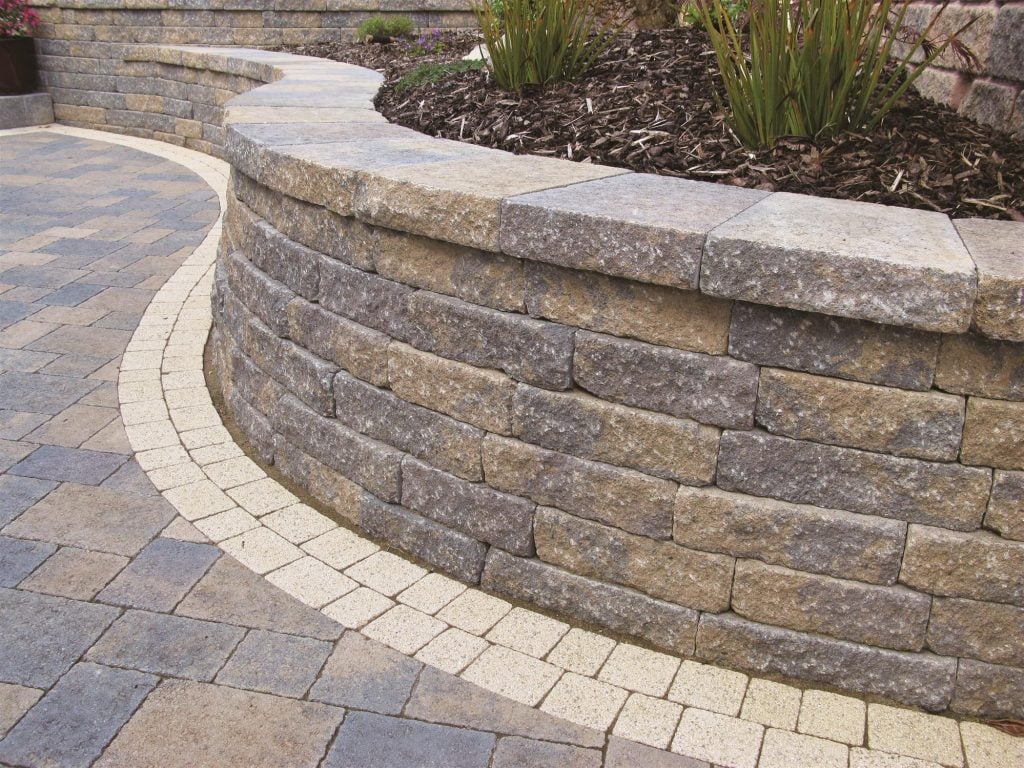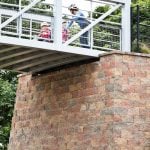Products
Back
Constellations
Back

Retaining walls are generally specified on sloping sites where the gradient limits the land use. The walls retain soil, allowing level areas to be created, which can be used for building on, for roads or parking, or for other open spaces. Retaining walls can also be terraced, making them a decorative landscaping feature.
There are various factors to consider when specifying a retaining wall, including the site conditions, design of the wall, product selection, installation and maintenance.
A gravity wall design is used in situations where a small amount of soil must be retained, such as for domestic applications, terraced walls or raised planting areas up to 1.2 metres high with Secura Grand or 960mm high with Secura Lite. They only depend on their own weight ans set-back to resist pressures from the soil behind them.
Secura Lite blocks are best suited for this type of small retaining wall.

Where an existing slope is to be removed to create a flat area and a vertical wall, a cut and fill design is used. This method cuts into the slope, removing soil from in front and behind the position of the final wall.
For these designs, a reinforced retaining wall is built up in courses with geogrid providing the reinforcement. The area behind each course is back-filled with graded drainage stone and a compactable free-draining material that minimises water pressure behind the wall.
We offer a catalogue of common designs for use at the scheme appraisal stage. For more information, download our design guide and watch the video below.

A concrete backfill wall design is used in situations where a limited area is available behind the retaining wall, meaning that geogrid cannot be used for reinforcement. The wall is placed at the bottom of a slope and the area behind it back-filled with concrete, acting as a mass gravity wall.
Secura Grand blocks are used for both cut and fill designs and fill wall designs. The placement of the blocks is simple, with a nib holding them in place (a nib at the rear of the blocks ensures stability and automatically creates the correct angle of set back). They can be built at a rate of 40–50m² per day. (A three man team on site can build approximately 40 m2 per day.)
Certain types of retaining wall require maintenance after installation. Concrete crib and timber crib products are stackable and are dry-installed. Visit our dedicated Secura retaining walls page for more information.
Secura blocks have a shape that allows them to be easily designed and built up into curved retaining walls, unlike crib systems, standard concrete blocks and shuttered concrete systems.
For reinforced retaining wall designs, the geogrid is laid in strips around the curve, perpendicular to the wall. The position of the geogrid strips is then alternated on the subsequent courses, ensuring the whole area is covered as the wall is built up.
View our new Secura Wall Brochure for more information
Secura segmental retaining walls can be specified for locations where the aesthetics of reinforced concrete walls or standard concrete block walls would be too harsh. Unsightly weeds and debris can build up in open-faced systems like gabions or timber crib, and this is not desirable in applications such as housing developments or higher prestige urban developments.
Secura blocks have a natural-looking organic finish that helps the walls to blend in to their environment and is much softer and much more pleasing than plain grey concrete.
Three attractive blended colours are available: Heather, Bracken and Slate. These feature a natural variation of colour and a rustic surface texture that has the appearance of aged, random, natural stone.
Secura segmental retaining walls are constructed using a mortar-free process that requires no skilled labour. They are quicker and easier to install compared with concrete block walls and shuttered concrete walls, saving time and money during construction. There are no mortar drying times to delay installation, meaning that constant progress can be achieved.
The placement of the blocks is simple, with a nib holding them in place. They can be built at a rate of 40–50m² per day.
For more detailed information, watch this video.
Certain types of retaining wall require maintenance after installation. Concrete crib and timber crib products are stackable are dry-installed, but the drawback with both of these is that they have voids in the face. Weeds and moss can grow in these spaces and wildlife and even vermin can inhabit them. They also present a climbing risk.
Secura segmental concrete block retaining walls require little or no maintenance after installation.
Compared with concrete crib retaining wall systems, when all the associated costs are considered e.g. labour, materials, time and machinery required Secura segmental retaining walls can provide a significant cost saving. For more information, contact our technical sales support for a quote.
Secura is a retaining wall range which provides an effective solution for any type of application. Not only does Secura prevent sloping site issues and create a more efficient use of land, but the mortar-free product is cost-effective and provides a fast and easy installation process.